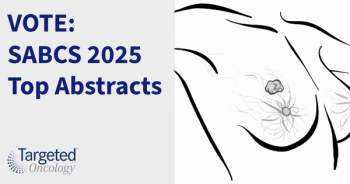
FDA to Evaluate Resubmitted NDA for Pedmark to Prevent Cisplatin-Induced Ototoxicity in Localized, Non-Metastatic Solid Tumors
A new drug application (NDA) seeking FDA approval for Pedmark, a formulation of sodium thiosulfate (STS) for the prevention of platinum-induced ototoxicity in pediatric patients 1 month to 18 years of age with localized, non-metastatic, solid tumors has been resubmitted, according to an announcement by Fennec Pharmaceuticals, Inc.1
The refiling follows a
“We appreciate the FDA’s comments during the resubmission process and look forward to working closing with the agency during the NDA review,” said Rosty Raykov, chief executive officer of Fennec Pharmaceuticals, in a press release. “We are pleased to have reached this important step and Fennec remains committed to making Pedmark available to reduce the risk of cisplatin induced ototoxicity in pediatric patients.”
Supporting the NDA are data from the 2 phase 3 clinical trials: ACCL0431 (NCT00716976) and SIOPEL 6 (NCT00652132).
The first study, ACCL0431, was a randomized, open-label trial that included 125 patients with various newly-diagnosed solid tumors. The primary end point of the study was the incidence of hearing loss 4 weeks after the final dose of cisplatin.2
Of the 125 patients, 104 were evaluable for the primary end point. Fourteen patients (28.6%; 95% CI, 16.6%-43.4%) had hearing loss after treatment with cisplatin in the sodium thiosulfate arm, compared with 31 patients (56.4%; 95% CI, 42.3%-69.7%) in the control arm (P = .00022). Further, patients who received sodium thiosulfate rather than observation were overall less likely to have hearing loss following cisplatin (odds ratio [OR], 0.31; 95% CI, 0.13-0.73; P = .0036).
At the 1-year mark, 67 of 104 patients were evaluable to be assessed during a post-hoc analysis. Results showed that 28% of patients had hearing loss in the sodium thiosulfate group versus 54% in the control group (P = .0015).
In terms of safety, toxicities were not different between the 2 study arms. Hematologic toxicity occurred in 77% of participant cycles in the sodium thiosulfate arm compared with 77% in the control arm (P = .95). The most common grade 3/4 hematological adverse event (AE) observed in the experimental arm versus the control arm was neutropenia (66% vs 65%). The most common non-hematological AE was hypokalemia, which was reported in17% of patients who received sodium thiosulfate versus 12% of those who received observation alone.
The second study, SIOPEL 6, was a multicenter, open-label, randomized phase 3 trial, which evaluated the efficacy of cisplatin plus sodium thiosulfate compared with cisplatin alone in 109 children. The study assessed the primary end point of absolute hearing loss threshold. The secondary end points included response to preoperative chemotherapy, complete resection, complete remission, event-free survival (EFS), overall survival (OS), safety, long-term renal clearance or glomerular filtration rate, and the feasibility of central audiologic review.3
Cisplatin was dosed at 80 mg/m2 of the body-surface area and administered over a 6-hour period in SIOPEL 6. Sodium thiosulfate was dosed at 20 g/m2 and administered intravenously over a 15-minute period, 6 hours following the discontinuation of cisplatin treatment.
According to the results, grade 1 or higher hearing loss occurred in 33% of patients in the cisplatin plus sodium thiosulfate group compared with 63% in the cisplatin-only group. This finding was indicative of a 48% lower risk of developing hearing loss in the cisplatin plus sodium thiosulfate arm (relative risk, 0.52; 95% CI, 0.33-0.81; P = .002).
At a median follow-up of 52 months, the 3-year OS rate was 98% (95% CI, 88%-100%) in the cisplatin plus sodium thiosulfate arm compared with 92% (95% CI, 81%-97%) in the control arm. The 3-year EFS rates in the cisplatin plus sodium thiosulfate arm was 82% (95% CI, 69%-90%) versus 79% (95% CI, 65%-88%) with the control.
Safety results showed that 57 patients who received cisplatin plus sodium thiosulfate and 52 who received cisplatin alone experienced AEs. The most common were grade 3 infection, occurring in 31% of the chemotherapy arm versus 23% of the cisplatin plus sodium thiosulfate arm, and grade 3 febrile neutropenia, which occurred in 19% versus 14%, respectively.
REFERENCES:
1. Fennec Pharmaceuticals resubmits new drug application to U.S. Food and Drug Administration for Pedmark. News release. Fennec Pharmaceuticals. March 24, 2022. Accessed March 25, 2022. https://bit.ly/3IyPclT
2. Freyer DR, Chen L, Krailo MD, et al. Effects of sodium thiosulfate versus observation on development of cisplatin-induced hearing loss in children with cancer (ACCL0431): a multicentre, randomised, controlled, open-label, phase 3 trial. Lancet Oncol. 2017;18(1):63-74. doi:10.1016/ S1470-2045(16)30625-8
3. Brock PR, Maibahc R, Childs M, et al. Sodium thiosulfate for protection from cisplatin-induced hearing loss. N Engl J Med. 2018;378(25):2376-2385. doi:10.1056/NEJMoa1801109









































